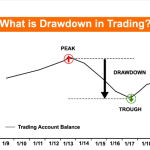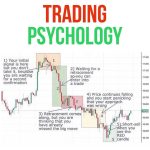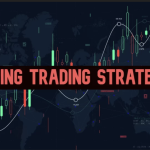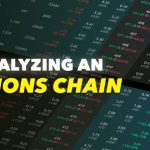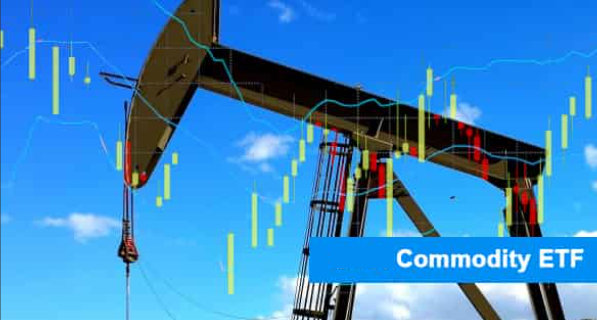
By ATGL
Updated April 21, 2024
Commodity exchange-traded funds (ETFs) are popular for diversifying portfolios beyond traditional stocks and bonds. These ETFs offer unique investment opportunities for physical goods such as gold, oil, and agricultural products without directly purchasing and storing the commodities.
Investing in commodity ETFs serves as a hedge against inflation and currency devaluation, as commodities often move inversely to stocks and bonds. However, like all investment vehicles, they come with risks and benefits. These make it crucial for investors to consider whether EFTs align with their investment goals and risk tolerance.
What Are the Advantages of Commodity ETFs?
Commodity ETFs present several advantages that can make them an appealing diversified investment strategy. Key benefits include:
- Diversification: Commodity ETFs provide access to a broad range of assets that do not correlate directly with the stock market.
- Convenience: These funds eliminate the complexities associated with direct commodity investments, such as storage concerns and dealing with futures contracts. Investors can buy and sell shares of commodity ETFs just like stocks through a brokerage account.
- Transparency: Commodity ETFs offer high transparency, with holdings disclosed daily. Investors see exactly what assets are available for investment.
- Liquidity: Due to their exchange-traded nature, most commodity ETFs are highly liquid, enabling investors to easily enter and exit positions.
Investors should weigh these advantages against the inherent risks of commodities trading, which include volatility and potential regulatory changes. Nonetheless, those seeking to hedge inflation or diversify their assets can consider commodity ETFs as a valuable addition to their investment portfolio.
Types of Commodity Exchange-Traded Funds
Commodity ETFs vary in structure and underlying investment strategies, catering to different investor needs and objectives. Understanding the various types of commodity ETFs is crucial for selecting the right fund that aligns with one’s investment goals.
Physical ETFs
Physical ETFs hold actual commodities in storage, such as gold, silver, or oil, providing direct exposure to the physical market’s price movements. These ETFs are appealing commodities investments without the complexities of futures contracts. The direct ownership aspect often reflects the market conditions affecting that commodity.
Physical ETFs are considered a safer bet during market volatility as they are backed by tangible assets. However, these funds can incur higher fees due to the costs associated with storage and insurance of the physical goods. Investors should also know the tax implications, which can differ from those of more traditional equity investments.
Futures-Based ETFs
Futures-based ETFs invest in futures contracts for various commodities like wheat, crude oil, or precious metals. The aim is to track the performance of a commodity index using futures contracts and be more accessible than direct commodity investments. While futures-based ETFs have profit potential during favorable market trends, they can also be more volatile and less predictable than physical ETFs.
Futures-contracts management requires a strategic approach to rolling contracts forward, which can lead to tracking errors relative to the commodity’s spot price. Futures-based ETFs are suitable for knowledgeable investors who understand the intricacies of futures markets and the potential contango or backwardation impacts on their investments.
Equity-Based ETFs
Equity-based ETFs invest in stocks of companies involved in the commodities sector, such as mining, energy, and agriculture corporations. This type of ETF provides indirect access to commodity prices through equities, often reflecting the performance of businesses that produce, extract, or process raw materials.
Equity-based ETFs can offer dividends, which add an income component to the investment. However, the fund’s performance is influenced by commodity prices, corporate performance, and management effectiveness of the involved companies. This can lead to higher returns during commodity booms and greater risks during downturns. Investors considering equity-based ETFs should assess their comfort with the corporate risks associated with the specific sectors within the commodities market.
Exchange-Traded Notes or ETNs
Exchange-traded notes (ETNs) are unsecured debt securities issued by financial institutions, designed to mimic the commodity index price movement without actually holding the physical commodity or derivative contracts. Unlike ETFs, ETNs are backed only by the issuer’s credit, thus carrying a risk of loss if the issuer faces financial difficulties. However, they offer precise tracking of the underlying index and do not incur tracking errors associated with futures contracts.
ETNs can be an effective tool for achieving exposure to commodities for investors willing to accept issuer credit risk in exchange for potential tax benefits, as ETNs are taxed only upon sale. They are particularly popular for targeted opportunities to specific commodities or commodity indices with the efficiency and flexibility of exchange trading.
Top-Performing Commodity ETFs You Should Consider
Selecting the right commodity ETF can be pivotal in achieving investment goals. Several ETFs have demonstrated robust performance by effectively managing commodity market nuances. For instance, ETFs focusing on precious metals like gold and silver often perform well during economic uncertainty as investors seek safe-haven assets. Energy sector ETFs, which include oil and natural gas, can offer substantial returns during rising energy prices. Additionally, agricultural commodity ETFs can capitalize on shifting supply and demand dynamics due to seasonal changes and geopolitical events.
Investors should consider their market outlook and risk tolerance when choosing among these top-performing ETFs. They may find it beneficial to consult performance histories and fund management strategies.
Make the Best Investment Decisions With Above the Green Line
At Above the Green Line, we are dedicated to helping you optimize your investment strategy with expert analysis and precise market insights. Utilizing our proprietary screening and analysis techniques, we identify high-potential investment opportunities in commodity ETFs and other sectors. By aligning your investment decisions with systematic, data-driven insights, you can enhance portfolio performance while managing risk effectively.
To make more informed and strategic investment choices in the commodities market, visit our detailed commodities resource. Equip yourself with the knowledge and tools needed to excel in today’s dynamic market environment.


